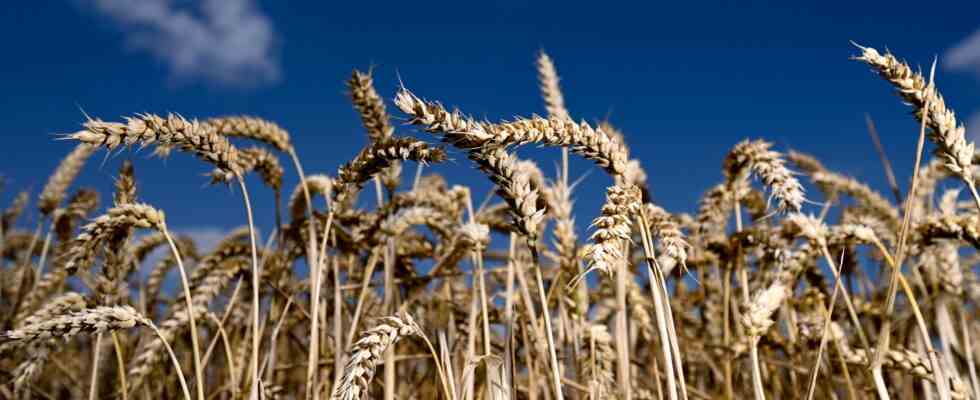Status: 06/23/2022 1:24 p.m
The Russian invasion of Ukraine has fueled fears of wheat shortages around the world. In the meantime, however, the situation on the wheat market has eased considerably. Prices are falling again. Why is that?
Until recently, reports on the wheat market were predominantly characterized by fear and sometimes even panic. After all, it was to be feared that the Ukraine as a result of the Russian attack as a wheat exporter for the world market would be completely or at least largely absent.
“Ukraine will disappear from the market for a long time,” warned Ukraine’s Agriculture Minister Mykola Solskii just a week ago. The Russian invasion will result in a global wheat shortage for at least three crops. The wheat price could almost double by July/August.
Wheat price in reverse
Reasonable concern or alarmism? In any case, a look at the wheat market currently paints a somewhat different picture than the statements from the Ukraine would suggest. The price of wheat has been falling in recent weeks, and the price decline has even accelerated significantly recently. The US wheat price slipped back below the 1,000 US cents a bushel mark this week. Today, around 960 cents are paid per bushel – less than since the beginning of March.
Fading supply worries are pushing down prices. From France, for example, it can be heard that the heat wave of the past few days should not have caused any major crop failures. “The French Minister of Agriculture is not assuming any dramatic drop in yields. It was previously feared that the heat could have an adverse effect on the wheat plants that were not yet fully developed,” explains Commerzbank raw materials expert Carsten Fritsch.
Russia and the EU could compensate for Ukraine defaults
The beginning of the wheat harvest in the USA and Europe is also reducing the price pressure. “As a result, the failure of Ukrainian wheat deliveries is at least temporarily pushed into the background,” says Fritsch.
A glance at the statistics also shows that Ukraine is undoubtedly an important wheat exporter, but “only” ranks seventh worldwide. In addition, with a view to the 2022/2023 harvest year, the reduction in Ukrainian export volumes by almost 50 percent or around nine million tons in a year-on-year comparison should be (over)compensated by other countries.
Is India backtracking on wheat export ban?
Russia, as the most important wheat exporter, is likely to increase its export volume by six million tons, and the current outlook points to a record harvest. EU exports are also expected to increase by five million tonnes.
In addition, the Indian Minister of Agriculture recently announced that the country could resume wheat exports to Indonesia, subject to availability. As recently as May, India – which many hoped could make up for Ukraine’s dip in the wheat market – halted its wheat exports with immediate effect, contributing to record high wheat prices. The partial reversal of this far-reaching decision thus significantly alleviates the supply concerns on the markets.
United Nations give the all-clear
The UN agricultural organization FAO has now given the all-clear: Despite the Ukraine war and the increased fertilizer prices, the world grain harvest this year is likely to be only slightly lower than in 2021. So far, the United Nations has been expecting 2.785 billion tons of wheat, corn and rice.
That would be around 23 million tons less than in the previous financial year, said FAO economist Josef Schmidhuber today. “That’s a very small difference, and really only a rough estimate at the moment.”
The clock is ticking for Ukrainian grain exports
Even with a view to Ukrainian grain exports, there have recently been signs of relaxation. UN Secretary-General António Guterres could be negotiating directly with the Russians and Ukrainians in Turkey as early as next week to seal a deal and allow grain to be exported from Ukraine via secured corridors in the Black Sea.
You don’t need to have a crystal ball to predict that the price of wheat is likely to drop significantly again in the event of an agreement. However, diplomats in New York warn against too much optimism. Especially since time is of the essence: storage capacities in the Ukraine are scarce and the new harvest is due. A deal would therefore ideally have to be in place in June.

